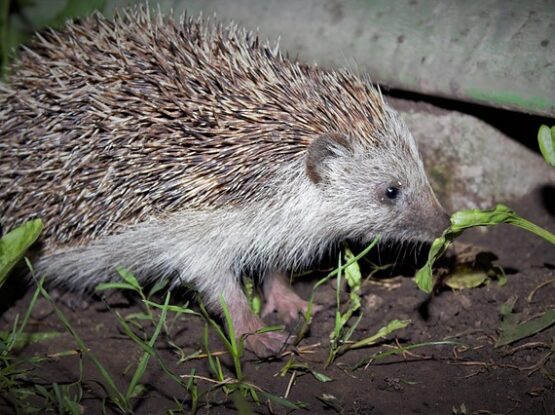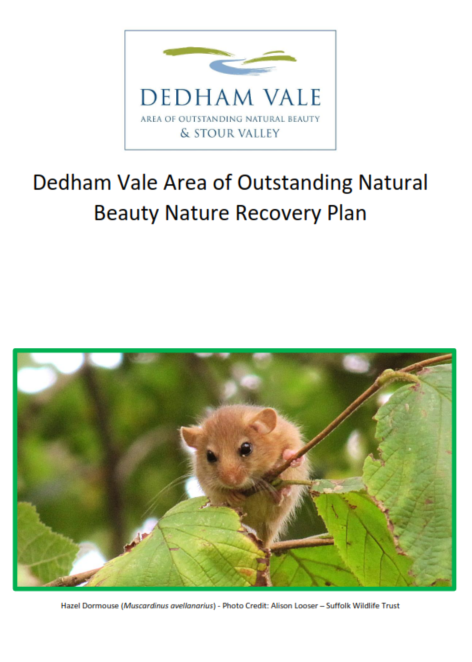Nature Recovery

The purpose of Nature Recovery is to engage partners to inspire and inform positive action for nature. Through Nature Recovery work and projects we aim to conserve what remains, whilst also taking steps to reinstate what’s been lost.
In the UK, the abundance and distribution of species on average continues to decline. The State of Nature Report 2019 showed that of the 7,615 species found in England, a staggering 971 (13%) are currently threatened with extinction from Great Britain.
How does Nature Recovery work in the National Landscape?
To support nature recovery the National Landscape will work with partner organisations such as the RSPB, Wildlife Trusts, Environment Agency and Natural England, plus multiple landowners to create and restore habitats for wildlife on a landscape scale. The National Landscape Partnership will look to utilise the various funding streams available to assist with nature recovery project implementation.
Nature Recovery Plan

Nature Recovery Plans are a key commitment of the Colchester Declaration. Their purpose is to engage partners to inspire and inform positive action and to conserve what remains and reinstate what’s been lost.
The Nature Recovery Plan for the Dedham Vale National Landscape & Stour Valley will relate to the Management Plan as a spatial expression of the shared vision for beautiful, resilient landscapes rich in wildlife. Through the implementation of the plan it is hoped that habitat and species recovery will be addressed at a landscape scale.
The National Landscape will strive to ensure incentives such as the new Environmental Land Management scheme will play a key role in resourcing positive change in the landscapes.
The Nature Recovery Plan also relates to land outside the protected landscape boundaries. Their compilation will inform process and help gather data relevant to the later development of county-scale Local Nature Recovery Strategies which will be a statutory duty on Local Authorities arising from the Environment Act.
Priority Species

Flagship Species: Hazel Dormouse
As part of our Nature Recovery Plan, the Hazel Dormouse was chosen to become the flagship species for the Dedham Vale National Landscape.
After a very difficult decision, the Hazel Dormouse (Muscardinus avellanarius) was selected by 14 organisations with an interest in the National Landscape’s wildlife.

Priority Species: Hedgehogs
The hedgehog is a priority species in the Dedham Vale National Landscape Nature Recovery Plan. In the past decade over a half of rural hedgehogs and a third from towns and cities have been lost.
Areas in and around towns and villages can be excellent habitats for hedgehogs, and hedgehogs often prefer them over farmland. We are working to create hedgehog-friendly gardens in the National Landscape.
Mapping

A key part of restoring hedgerows and hedge planting in the Dedham Vale and Stour Valley is surveying and mapping to help plan future activities and record progress.
The ArcGIS mapping software has allowed hedgrows in the area to be plotted and shared amongst volunteers, with the information recorded electronically and mapped visually.
The Colchester Declaration
The National Landscapes Association made a collective declaration on nature in National Landscapes in 2019.
Set against a backdrop of unprecedented concern for the future of the natural world, and intergovernmental reports that the current global response to the effects of human impact on nature is insufficient, the Association decided to set out a strategic plan in the Colchester Declaration (PDF).
In order to fulfil the ambitious target laid out in the Colchester Declaration, each National Landscape is now preparing a Nature Recovery Plan.
By 2030, we pledge to achieve the following ambitious targets to help reverse the decline of nature:
- At least 200,000 hectares of SSSI’s in National Landscapes will be in favourable condition
- At least 100,000 hectares of wildlife rich habitat outside of protected sites will have been created/ restored in National Landscapes to further support the natural movement of plants and animals
- At least 36,000 hectares of new woodland will have been planted or allowed to regenerate in National Landscapes following the principle of the right tree in the right place
- At least thirty species relevant to National Landscapes will be taken off the list by 2030 by each National Landscape immediately adopting a species on the threatened list and by preparing and delivering a Species Action Plan
Policy Context
A key objective of the UK government set out in the 25 Year Environment Plan is to develop a Nature Recovery Network. The creation of the Nature Recovery Plan for each National Landscape will be key to the creation of the Nature Recovery Network.
The Landscapes Review 2019 (often referred to as the Glover Review) determined that protected landscapes need to do more for nature. The Environment Bill 2020 mandated Local Nature Recovery Strategies to be prepared for each local authority area.
There will be opportunities to support the realisation of Nature Recovery Plans through ELM, mandatory biodiversity net gain, the National Planning Policy Framework and Green Investment.
National Landscape partnerships have facilitated integrated land management, including nature recovery for over 30 years, examples can be seen on the Landscapes for Life website.
